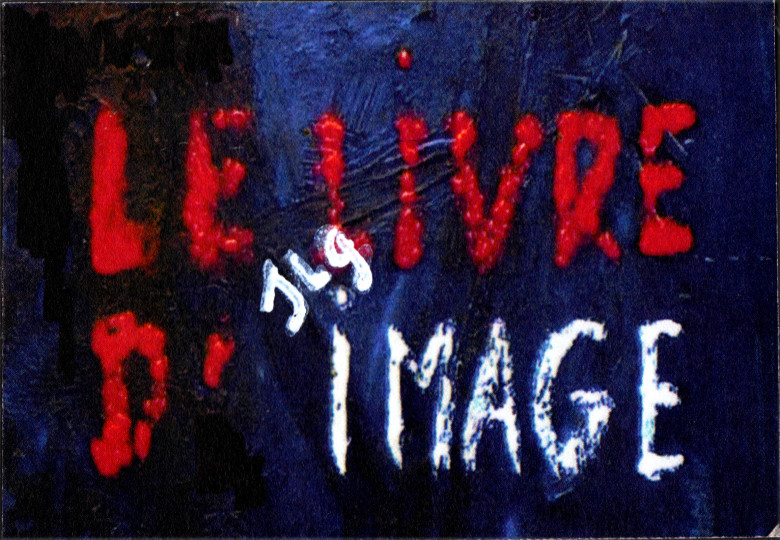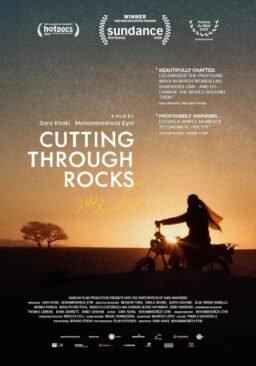The event of all events at today’s Cannes Film Festival was the premiere of Jean-Luc Godard’s “The Image Book.” Director of 127 films and counting, including the more recent “Goodbye to Language” in 3-D, and “Film Socialisme,” the 87-year-old can still be counted on to attract lines around the block, which he did today, and will doubtless continue to do in the course of several more screenings tomorrow. He’s not here in person, but as narrator of “The Image Book,” with a new spooky, raspy, up-from-the-sepulchre voice, he was very much with us in irascible spirit.
In “The Image Book,” Godard charges through a densely-packed, five-part, stream-of-consciousness assemblage of images. It’s an obsessively intense vocalized and text-driven tour through his political thoughts on world history, Western appropriation of Third World resources, Egypt, Islam and the religions of the book; “The Image Book” ends with a major focus on the Middle East, including a fictional story involving a made-up sheikh from a made-up nation, who plans to unite the Middle East under his rule.
This mosaic of moving pictures is composed of solarized images and footage from many sources, including newsreels, and countless snippets from his own films and scores of others, including “The Passion of Joan of Arc,” “Salo,” “The General” and “Citizen Kane.” A haunting recurring image is that of an Arab child rolling a 35mm film reel along a path as if it were a hoop, with the strip of film unreeling on the ground behind him.
Among the hundreds of puzzling, intriguing and challenging elements of “The Image Book” is the finger. Godard is giving his audience the index finger, pointed upwards, as if to the sky. It’s a hand gesture often seen in illustrations of Jesus. Does he mean us to listen, hush, or look higher for answers? The finger recurs, followed by a variety of images of fingers and hands, some outstretched.
Godard is one of the few directors today who has truly created art with the technology of surround sound. Just as he repurposed 3-D in “Goodbye to Language,” in “The Image Book” he has composed and mixed his soundtrack to play with the entire capacity of the surround sound system as no director has ever done before. His narrating voice crosses stereo channels, left, center and right, booms out of the surround speakers at the back of the theater, and speaks to itself in intricate overlays. He plays with volume and aural shading. Like whack-a-mole, sounds and voices can jump out from any part of the theater.
This movie magician never loses his power to challenge and confound. “The Image Book” is a film that can be analyzed minutely for hidden meanings, or it can be enjoyed as a barrage of sound and image meant to wash over the senses.

When the curtains opened on the competition premiere of Pawel Pawlikowski’s “Cold War,” today, it was to reveal an almost-square image, a screen ratio rarely seen at a time when wide-and-wider-screen films have long been the expected norm. This film too, by the 2015 Oscar-winning Polish director of “Ida,” has inspired some of the most heightened expectations of the festival. An assured master of black-and-white cinematography, Pawlikowski brings a luminous chiaroscuro to the painful trajectory of a star-crossed love affair between two people whose enduring magnetic attraction defies all logic. The beauty of his precise compositions is one of the great pleasures of a film that will proceed to deny many of the traditional satisfactions of a love story.
Covering the years from 1949 to 1964, and traversing locations from rural Poland to Paris and back, “Cold War” is the story of Wiktor (Tomasz Kot), an accomplished, ruggedly handsome man at mid-life, who falls for Zula (Joanna Kulig) a talented, ambitious and manipulative student. The co-director of a state-sponsored institute for the preservation of Polish folk music, Wiktor feels the instant sting of attraction during the initial audition of the coy beauty with the clear voice, the flaxen braid and the air of guileless innocence.
Soon, they are not only secretly sleeping together, but Zula becomes a featured performer with the institute’s folk ensemble, even after confessing to Wiktor that she takes the self-protective precaution of informing on him weekly to their Party overseer, a stocky bland bureaucrat who also has eyes for her.
“Cold War” is rich in imagery and economical with dialogue. The film’s many music and dance performances, superb and mesmerizing, are emblematic of the changing relationship of Wiktor and Zula. These are not window dressings, but one of the drivers of the narrative. Just as the two mismatched lovers seem bonded by an irresistible force that renders them its puppets, they are transported through time by the vagaries of an evolving historical period that Pawlikowski conveys through the music, from traditional songs to jazz to Fifties rock and kitschy pop.
The film opens in 1949, with raw and affecting renditions of peasant folk songs, a step into the past in a village where Wiktor and his institute colleague are making recordings for their research. Later, the institute’s folk ensemble will give polished public shows of similar material, but success leads to political appropriation. As their fame and touring schedule widen, orders are given to make the mission “more global.” New songs about great leaders and agricultural triumphs replace the old timeless ones about farmyard romance and broken hearts. An enormous portrait of Stalin now flutters onstage on a banner behind the chorus.
Wiktor, acclaimed as the ensemble’s arranger and conductor, forms an airtight plan to defect with Zula during an appearance in East Berlin, but his slippery and elusive lover doesn’t show at the appointed hour. Alone in Paris, eking out a living as a cabaret performer and soundtrack arranger for films, Wiktor hangs on to his ideal, “the woman of my life,” in a remote push-pull of a relationship, neither together nor apart, until she makes the break to join him. Paris becomes a prison to the unhappy chanteuse, who longs for home. He will follow her at a great price.
The central question concerns why these two have been willing to sell their souls for each other in a flawed dream of eternal love. The togetherness that Pawlikowski ultimately fashions for the pair after each is drawn back to Poland is a deliberate paradox. Confinement becomes freedom and the end becomes a tragic sort of beginning.












